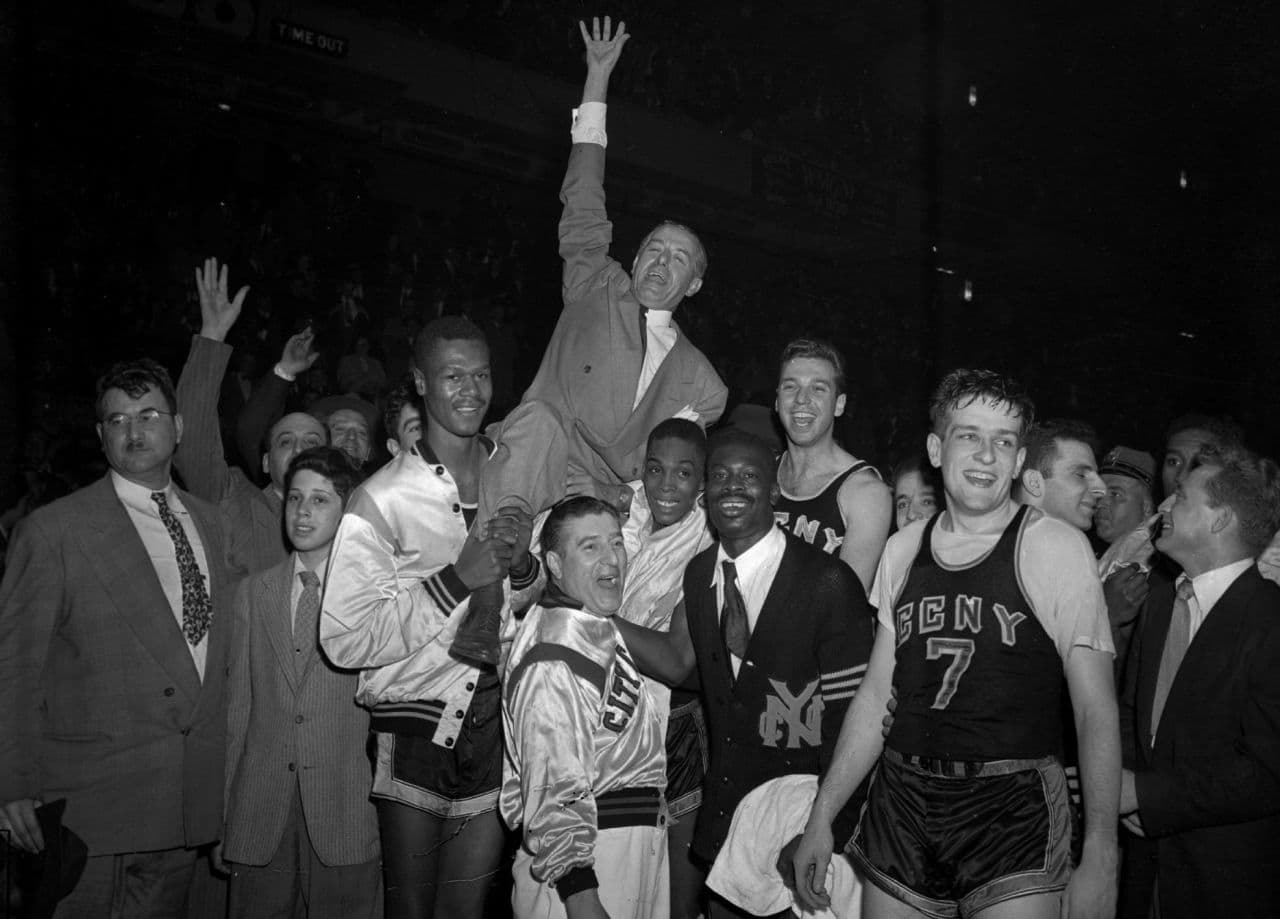Advertisement
How March Became Mad
ResumeThese days the NCAA basketball tournament is all about your bracket in the office pool, but you might be surprised to know there hasn’t always been a selection show. All the games weren’t always televised. And March Madness was a phrase that was originally used to describe high school basketball tournaments.
The story about how that came to be is usually that March Madness was coined by Henry Porter, an official with the Illinois High School Association, in 1939. In an essay, Porter wrote “A little March madness may complement and contribute to sanity and help keep society on an even keel.” But etymologist Barry Popik points out that it was actually used to describe the state tournament in neighboring Indiana as early as 1931.
Sportscaster Brent Musberger often gets credit for applying March Madness to the NCAA tournament in the 1980s. But you can go back and watch entire games from that era and Musberger seldom uses the term.
March Madness was a phrase that was originally used to describe the state high school basketball tournament in Illinois.
It certainly wasn't used when the first NCAA basketball tournament was held in 1939. There were only eight teams, compared to today's 68. Oregon won the first championship, beating Ohio State in the title game.
So that was the start, but in the early years, the tournament we now also know as "the Big Dance" wasn't really even the most glamorous post-season tournament. That description went to the National Invitation Tournament, the NIT, which was played in New York's Madison Square Garden, considered by many fans to be the basketball mecca.
As the years passed and the NCAA tournament grew in stature, pressure started to build to expand the field, which had already grown to couple dozen teams. The problem had to do with the fact that the tournament only accepted conference champions. So that left some of the best teams in the country on the sidelines, or in the NIT.

Two of the many teams that fell into that category are the 1970 South Carolina team, which was 14-0 during the regular season in the Atlantic Coast Conference, but lost in the ACC's post-season tournament. So the Gamecocks' season was over. The same thing happened to an awesome Maryland team in 1974. The Terrapins lost to North Carolina State in the ACC final and they were so devastated, they didn't even accept an NIT bid
So that was enough to force a change. The next year the NCAA Tournament expanded to 32 teams and accepted non conference winning teams, like South Carolina and Maryland were, for the first time. That 1975 tournament produced some great games, including a 92-90 Kentucky win over undefeated Indiana in the Mideast Regional Final. Kentucky ended up losing to UCLA in the championship game. It was the last of 10 titles the Bruins’ legendary coach John Wooden won at UCLA.
The NCAA kept the 32-team field for a few years before the expansion continued, first to 40 teams, then 48 and now 68. There's talk today about a 96-team field. But perhaps the real number to pay attention to is $10.8 billion. That's how much CBS and Turner paid the NCAA to televise the games over a 14-year period.
That's the sort of madness Henry Porter never imagined when he came up with the now famous phrase March Madness.
Clarification Notes:
3/27/15: The text above was updated to add the information that the 1975 NCAA Tournament was not the first time "at large" teams were included in the field. It was the first time that more than one team from each conference was included in the field. Teams that did not belong to conferences had been included.
3/30/15: The text above was updated to add the information that the term "March Madness" was used to describe the state tournament in neighboring Indiana as early as 1931, according to etymologist Barry Popik.
Reporter
- Alex Ashlock, producer, director and reporter for Here & Now. He tweets @aashlock.
This segment aired on March 26, 2015.
